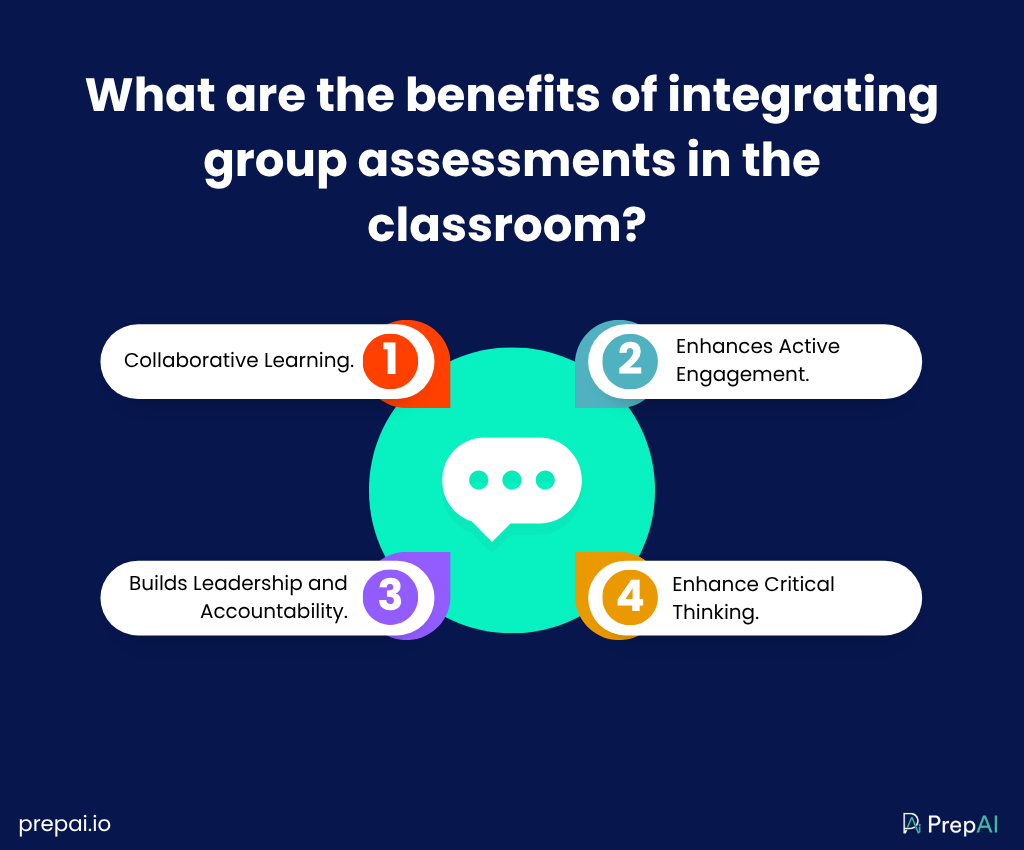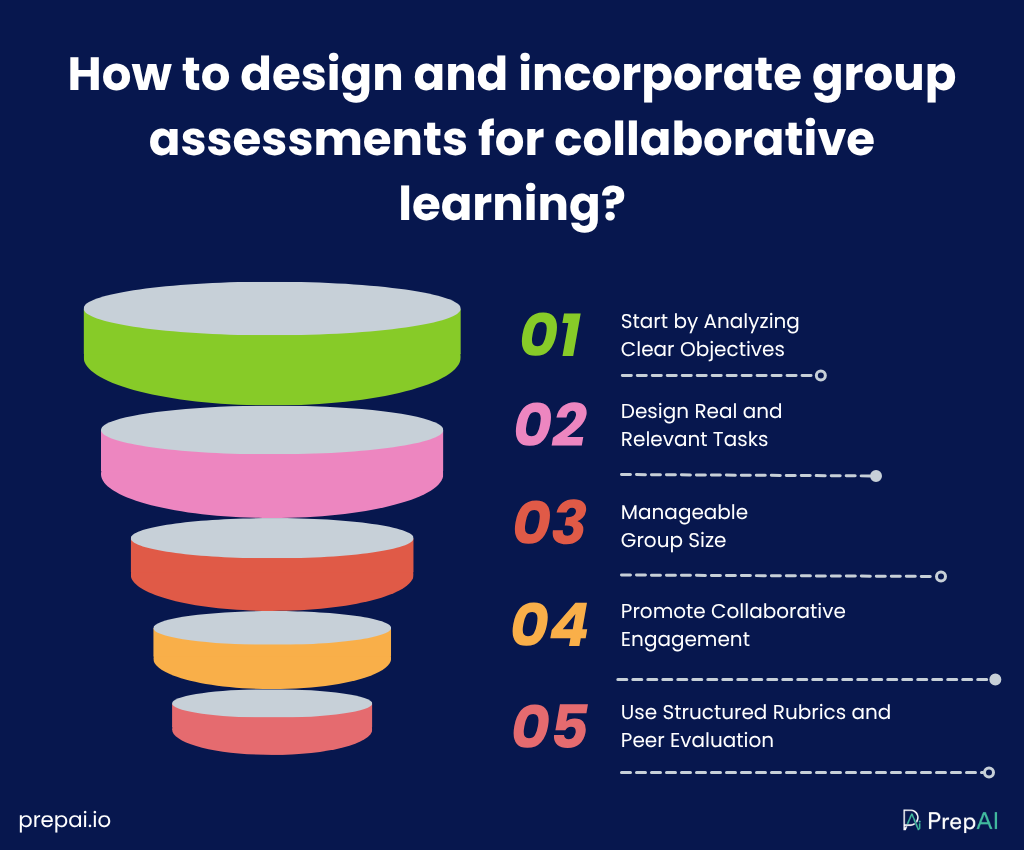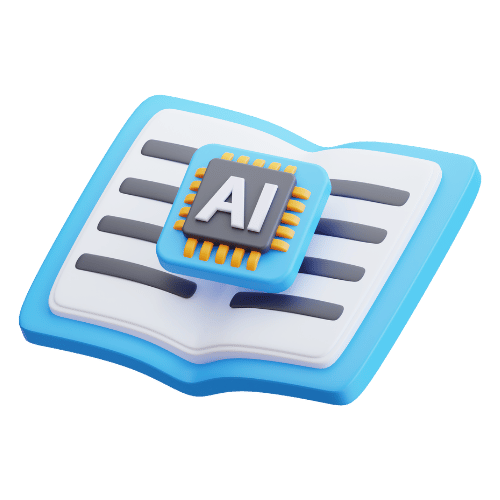Group assessment is a task in which students work together on an assignment or project. It allows them to showcase their knowledge, skills, and abilities as a team. Let’s understand how teachers can enhance collaboration & engagement through group assessments.
Group assessment is a cutting-edge method that harnesses the strength of teamwork by enabling students to review each other’s work in a group setting. This approach is becoming more widely acknowledged and has become an essential tool in educational settings. Group assessments develop vital abilities like critical thinking, communication, and accountability in addition to a deeper understanding of the subject matter.
In the linked world of today, being able to collaborate well with others is not merely a desirable quality; it is essential. More than 70% of students think that group assessments help them learn and remember the subject in a better way and for a longer period. Group assessments and projects main objective is to improve learning outcomes by including participants in the evaluation process. Group assessments encourage teamwork and let students learn from each other’s skills and shortcomings.
This cooperative method fosters a sense of accountability among the group in addition to improving their caliber to work on a task. Participants are more likely to approach activities seriously and pay closer attention to details when they are tasked with evaluating the work of others. Thus, it leads to developing critical skills like analytical skills, better communication, and how to work on constructive feedback.
What are the benefits of integrating group assessments in the classroom?
Teachers can create group assessments using exam generators that are unique and aligned with the students’ knowledge. These test makers for teachers help them save time and generate various types of questions for different difficulty levels. The benefits of group assessments can lead to the following:

Collaborative Learning
When teachers focus on conducting group task management, it enhances collaboration by encouraging teamwork, shared learning, and interchanging diverse perspectives. With collaborative learning, students can address intricate issues that call for a variety of viewpoints and competencies. This develops better problem-solving skills.
Enhances Active Engagement
Students must interact, listen, and cooperate with their peers when working in groups, which promotes collaboration abilities and a more lively learning atmosphere. Students who work in groups gain vital abilities that are useful in different areas, such as self-management, creativity, communication, and critical thinking. Students can gain more self-awareness through group work by reflecting on their own strengths and shortcomings and learning from one another.
Builds Leadership and Accountability
When teachers focus on interactive assessments, it helps in frequently highlighting the capabilities of natural leaders in students. These will be those who successfully plan, inspire, and assign work. Similarly, students will also learn accountability because each member’s participation is essential to the group’s success. Being prepared for the workplace requires this harmony between leadership and accountability.
Enhance Critical Thinking
Critical thinking abilities can be considerably improved by integrating group assessments in the classroom. Students gain proficiency in analyzing information, argument creation, and logical conclusion-making through cooperative problem-solving and the assessment of various viewpoints. These qualities are necessary for the development of successful teamwork and effective decision-making in various domains.
How to design and incorporate group assessments for collaborative learning?
Teachers can incorporate group assessments to let students get collaborative learning benefits, allowing students to encourage diverse perspectives while building confidence. AI question generators for teachers can help them curate group assessments to ensure meaningful and measurable outcomes. To design group assessments, teachers must think, plan, and use the right tools in the following manner:

Start by Analyzing Clear Objectives
Teachers must ensure that the assessment task is in line with the learning objectives for the course and the subject. Start by outlining the goals and lessons that the group project will teach the students. For example: If the teacher wants to conduct group assessment of 10th class. Their objective must be to assess students’ understanding of environmental sustainability. Students should be asked to work together to create a sustainable blueprint for a smart city rather than just listing eco-friendly activities. This will help students and teachers focus on the desired knowledge and abilities and guarantee that the evaluation is positively correlated with the course and subject objectives.
Design Real and Relevant Tasks
Teachers must try to create tasks that mimic real-world situations. The use of a test maker for teachers can be beneficial because these tools can help them generate real and relevant tasks without much effort. Teachers must ensure the assessment’s relevancy and student appeal are directly tied to the course material and applicable to real-world situations. Try to draft engaging assignments like asking students to design a model that helps the city reduce carbon emissions, while promoting green energy. These types of assignments are directly relevant to students’ future careers and foster deeper learning and teamwork.
Manageable Group Size
Large groups could find it difficult to come to an agreement and handle tasks effectively, while small groups might not have the variety of skills required for a comprehensive project. Although the ideal number of students in each group is not predetermined, in this case, teachers should try to analyze the task’s requirements and try to have groups of four to five students by dividing responsibilities as per role aligned. Teachers must also verify skill levels in the group and identify communication styles to balance team dynamics effectively.
Promote Collaborative Engagement
Teachers can incorporate project-based learning and promote a collaborative environment by fostering peer interaction, promoting active learning, and letting students provide diverse perspectives. Using such assessment encourages students to discuss concepts, share ideas with each other, and engage in more complex thinking processes. Students can benefit from each other’s talents, gain insight from diverse perspectives, and gain a deeper comprehension of the material by cooperating.
Use Structured Rubrics and Peer Evaluation
It is quite essential to ensure fair and comprehensive evaluation during group assessments. To counter this, teachers must try to structure rubrics that clearly define the performance criteria. Using tools like PrepAI can help them assess not only the final output but also the quality of collaboration, leadership qualities displayed, individual contributions, and problem-solving approaches. Peer assessments also encourage accountability by enabling students or team members to consider the participation and efforts of their teammates. In addition to encouraging more active engagement, this dual approach—structured grading with peer evaluation—provides a more comprehensive view of each student’s position and impact within the group.
Conclusion
Establishing a collaborative environment in the classroom improves the overall student experience and supports successful outcomes that fairly represent students’ skills. It takes into account the thoughtful approach of planning, execution, and evaluation of group assessments. The best online quiz maker for teachers can be used for creating and conducting online exams for group assessments. These tools can also evaluate their performance, saving a lot of manual work for the teachers.
Your students’ productivity and education can both be improved by a collaborative learning environment. Through this, students will also learn important work ethic and communication skills. These abilities are essential for future professional success and will give students the groundwork for both academic and professional achievement.



